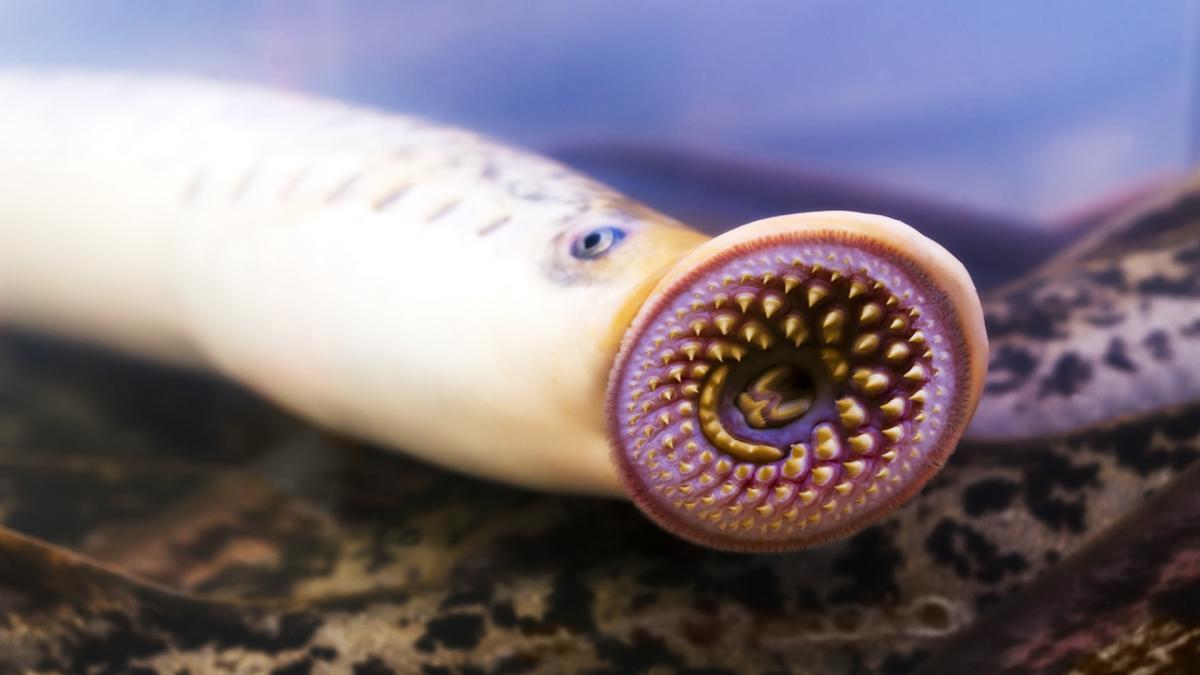Experts from Michigan State University are working on a groundbreaking way to deal with an invasive fish that is blighting Lake Michigan and connecting waterways.
Sea lampreys look like they’ve been dreamed up by horror writers. The eel-like fish have a disk-shaped mouth full of teeth, which they use to suck onto other fish and extract their host’s bodily fluids.
Michael Wagner, an associate professor in the Department of Fisheries and Wildlife’s Applied Behavioral Ecology Lab, told MSU Today that one sea lamprey can destroy around 40 pounds of native fish by the time they reach spawning age. This presents a huge problem for a delicate ecosystem.
The so-called “holy grail” of invasive-species control developed by MSU researchers would effectively allow passage of desirable species while filtering out sea lampreys that might otherwise enter the Boardman/Ottaway River from Lake Michigan.
Known as FishPass, the system would act as a barrier that can sort fish, capture the sea lampreys, and allow beneficial species to continue on their journey.
“It’s a concept,” Wagner said. “It’s not like we’re taking something that succeeded elsewhere and tweaking it. We’re trying to do something nobody’s ever done before.”
Watch now: Honda reveals how it’s rethinking electric vehicles from the ground up with exciting new concept cars
The system would act as another phase of a $20 million project to restore the Boardman/Ottaway River. Dams for making flour and providing hydroelectricity — which disrupted the natural flow of rivers and stopped native fish from reaching historic habitats — have been torn down, helping to reconnect 160 miles of the river, according to MSU Today.
Human-made locks in the river network are said to have brought the sea lampreys to the Great Lakes from Canada. The Great Lakes Fishery Commission has put population decline among lake trout, whitefish, and chub at the fins of the parasitic fish.
Sorting the lampreys from the desirable fish is where things get tricky. MSU engineer Xiaobo Tan has developed a panel that the lampreys can attach themselves to, which could set off a sensor that can alert the FishPass monitors. Passage could then be blocked, or an electric shock could paralyze the creature.
A similar system is being worked on by Huawei and Simula Consulting, which utilizes AI to detect different salmon species and select which ones are allowed passage through an underwater cage system and onward to breeding sites. The invasive salmon, on the other hand, can be captured and removed from the river.
Invasive fish species can wreak havoc on biodiversity, either by hunting native species, outcompeting them for food, or destroying habitats. While technology is one way to control populations, hunting or eating them is sometimes an option.
Restaurants in Florida have been catching and cooking invasive lionfish, for example; in the United States’ northeast, one restaurant serves invasive green crab to diners.
Whatever method makes the most sense, it’s important to be vigilant against invasive species — whether it’s plants or animals — as their impact on the ecosystem can have profound knock-on effects that might not be realized until years later.
Join our free newsletter for weekly updates on the latest innovations improving our lives and shaping our future, and don’t miss this cool list of easy ways to help yourself while helping the planet.
